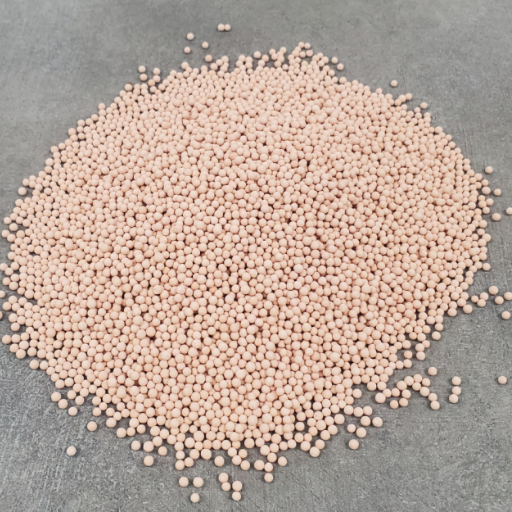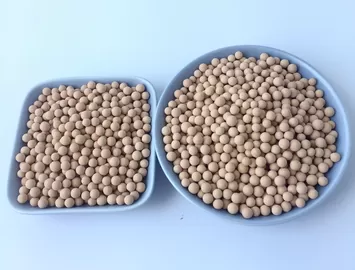Description
Molecular Sieves: A Powerful Tool in the Fight Against CO2 Emissions
Carbon dioxide (CO2) is a major contributor to climate change, driving global warming and its associated environmental consequences. Consequently, capturing CO2 from various sources, such as power plants and industrial facilities, has become a critical focus for researchers and engineers worldwide. Among the technologies being developed, molecular sieves are emerging as a promising and effective method for CO2 capture.
What are Molecular Sieves?
Molecular sieves are crystalline, porous materials with precisely defined pore sizes, typically in the range of 0.3 to 1 nanometers. This unique structure allows them to selectively adsorb molecules based on their size and shape. Think of them as highly selective filters at the molecular level. They are commonly made from aluminosilicates (zeolites), but other materials like activated carbon, metal-organic frameworks (MOFs), and carbon molecular sieves (CMS) are also used.
How Molecular Sieves Capture CO2:
The principle behind CO2 capture using molecular sieves lies in their ability to preferentially adsorb CO2 molecules over other gases present in flue gas, such as nitrogen and oxygen. This selectivity arises from a combination of factors:
- Pore Size: The pore size is tailored to match the dimensions of CO2 molecules, allowing them to enter and be trapped within the pores while excluding larger molecules.
- Surface Chemistry: The internal surface of the molecular sieve can be functionalized to enhance the interaction with CO2 molecules through electrostatic or van der Waals forces. This “stickiness” further promotes CO2 adsorption.
The CO2 capture process typically involves two main stages:
- Adsorption: Flue gas is passed through a bed of molecular sieve material. The CO2 molecules are adsorbed onto the sieve surface, while other gases pass through.
- Desorption: Once the molecular sieve is saturated with CO2, the adsorption process is stopped. The molecular sieve is then heated or subjected to a pressure reduction, causing the CO2 molecules to be released. This regeneration step allows the molecular sieve to be reused for subsequent adsorption cycles.
Advantages of Using Molecular Sieves for CO2 Capture:
Molecular sieves offer several advantages for CO2 capture compared to other technologies, such as amine scrubbing:
- High Selectivity: Their precise pore structures allow for efficient separation of CO2 from other gases.
- High Adsorption Capacity: Certain types of molecular sieves can adsorb significant amounts of CO2.
- Thermal and Chemical Stability: Many molecular sieves are robust and can withstand high temperatures and harsh chemical environments.
- Regeneration Capability: They can be regenerated multiple times, making them economically sustainable.
- Potential for Lower Energy Consumption: Compared to amine scrubbing, some molecular sieve-based processes offer the potential for reduced energy costs.
Challenges and Future Directions:
Despite their potential, several challenges remain in the widespread adoption of molecular sieves for CO2 capture:
- Cost: The cost of manufacturing certain types of molecular sieves can be relatively high.
- Sensitivity to Moisture: Some molecular sieves are sensitive to moisture, which can reduce their adsorption capacity.
- Scale-Up: Scaling up the production of molecular sieves and the design of large-scale CO2 capture systems pose engineering challenges.
- Optimization: Optimizing the pore size, surface chemistry, and operating conditions to maximize CO2 capture efficiency is an ongoing area of research.
Ongoing research efforts are focused on:
- Developing new and more cost-effective molecular sieve materials: This includes exploring different materials, like MOFs and CMS, and optimizing their synthesis methods.
- Improving the stability and performance of molecular sieves: Researchers are working on enhancing their resistance to moisture and other contaminants in flue gas.
- Designing more efficient CO2 capture systems: This involves optimizing the adsorption and desorption processes to minimize energy consumption and maximize CO2 recovery.
- Integrating molecular sieves with other CO2 capture technologies: This could lead to hybrid systems that offer improved performance and lower costs.
Conclusion:
Molecular sieves represent a promising technology for capturing CO2 from various sources. Their high selectivity, adsorption capacity, and regeneration capability make them a valuable tool in the fight against climate change. While challenges remain, ongoing research and development efforts are paving the way for the widespread adoption of molecular sieves in CO2 capture systems, contributing to a more sustainable future. As research continues and these challenges are overcome, molecular sieves are poised to play a significant role in mitigating the impacts of CO2 emissions and transitioning towards a cleaner energy future.












Reviews
There are no reviews yet.